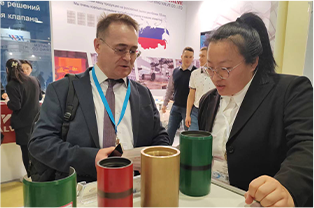- Afrikaans
- Albanian
- Amharic
- Arabic
- Armenian
- Azerbaijani
- Basque
- Belarusian
- Bengali
- Bosnian
- Bulgarian
- Catalan
- Cebuano
- Corsican
- Croatian
- Czech
- Danish
- Dutch
- English
- Esperanto
- Estonian
- Finnish
- French
- Frisian
- Galician
- Georgian
- German
- Greek
- Gujarati
- Haitian Creole
- hausa
- hawaiian
- Hebrew
- Hindi
- Miao
- Hungarian
- Icelandic
- igbo
- Indonesian
- irish
- Italian
- Japanese
- Javanese
- Kannada
- kazakh
- Khmer
- Rwandese
- Korean
- Kurdish
- Kyrgyz
- Lao
- Latin
- Latvian
- Lithuanian
- Luxembourgish
- Macedonian
- Malgashi
- Malay
- Malayalam
- Maltese
- Maori
- Marathi
- Mongolian
- Myanmar
- Nepali
- Norwegian
- Norwegian
- Occitan
- Pashto
- Persian
- Polish
- Portuguese
- Punjabi
- Romanian
- Russian
- Samoan
- Scottish Gaelic
- Serbian
- Sesotho
- Shona
- Sindhi
- Sinhala
- Slovak
- Slovenian
- Somali
- Spanish
- Sundanese
- Swahili
- Swedish
- Tagalog
- Tajik
- Tamil
- Tatar
- Telugu
- Thai
- Turkish
- Turkmen
- Ukrainian
- Urdu
- Uighur
- Uzbek
- Vietnamese
- Welsh
- Bantu
- Yiddish
- Yoruba
- Zulu
Seamless Tubing Connectors for Enhanced Strength and Reliability in Industrial Applications
Understanding Seamless Tubing Couplings Essential Components in Modern Engineering
In various engineering and industrial processes, the integrity of connections is of utmost importance. One such vital component that ensures strong, reliable connections in piping systems is the seamless tubing coupling. This article will dive into the characteristics, applications, advantages, and manufacturing processes of seamless tubing couplings, highlighting their indispensable role in modern engineering.
What Are Seamless Tubing Couplings?
Seamless tubing couplings are fittings that connect two sections of tubing without any seams or joints. This design feature is critical because it significantly minimizes the risk of leaks and weaknesses often associated with welded or threaded joints. Seamless couplings are manufactured from a single piece of metal, typically aluminum, stainless steel, or carbon steel, which is drawn through a die to achieve the desired diameter and wall thickness.
Key Characteristics
One of the defining characteristics of seamless tubing couplings is their ability to withstand high pressures and extreme temperatures, making them suitable for various applications in different industries, including oil and gas, aerospace, and chemical processing. Seamless couplings are also known for their corrosion resistance, especially when made from alloys that are specifically treated to resist chemical degradation.
The absence of seams in seamless couplings not only enhances their structural integrity but also facilitates fluid flow, creating a more efficient passage for gases and liquids. They are engineered to meet specific standards and specifications, such as ASTM, ASME, and ISO, ensuring quality and compatibility with various systems.
Applications of Seamless Tubing Couplings
Seamless tubing couplings find applications across various industries due to their robust nature and reliability. In the oil and gas sector, they are used in exploration and drilling operations where high-pressure environments are common. Couplings connect various components of pipelines, ensuring the transfer of oil and natural gas from extraction sites to refineries and distribution networks.
In aerospace, seamless couplings are employed in fuel and hydraulic systems, where any failure could lead to catastrophic results. The manufacturing of aircraft requires components that can withstand extreme conditions and maintain integrity under pressure, making seamless couplings a preferred choice.
seamless tubing coupling

Chemical processing plants also utilize seamless couplings to handle corrosive substances. The ability of these fittings to resist chemical reactions ensures that chemical transfers remain safe and efficient. Furthermore, seamless couplings are critical in the food and beverage industry, where hygiene and material integrity are paramount.
Advantages of Using Seamless Tubing Couplings
The primary advantage of seamless tubing couplings lies in their structural strength. Without welded seams that can potentially fail, these couplings exhibit greater durability and longevity. Additionally, seamless couplings typically have a smooth internal surface, which promotes better flow rates and minimizes turbulence.
Another significant benefit is the reduced risk of fatigue failure. With no welds or joints, seamless couplings can endure the stresses of thermal expansion and contraction, making them highly reliable over time. Furthermore, their consistent dimensions enable easier installation and help reduce the risk of misalignment during assembly.
Manufacturing Processes
The production of seamless tubing couplings involves several steps, each crucial to ensuring the quality and performance of the final product. The manufacturing process often begins with a solid billet of metal, which undergoes heating and piercing to create a hollow tube. This tube is then elongated through a process called extrusion, achieving the desired length and diameter.
Post-extrusion, the couplings may undergo processes such as cold working, heat treatment, and surface finishing to enhance their mechanical properties. Quality control measures, including non-destructive testing methods like ultrasonic testing and radiography, are implemented to identify any potential defects.
Conclusion
Seamless tubing couplings are vital components that play a crucial role in ensuring the reliability and efficiency of piping systems across diverse industries. Their unique characteristics, which include high strength, resistance to failure, and corrosion resistance, make them an ideal choice for applications where safety and durability are paramount. As modern industries continue to evolve and demand higher performance standards, the significance of seamless tubing couplings will undoubtedly expand, reinforcing their position as essential elements in contemporary engineering disciplines.
-
Tubing Pup Joints: Essential Components for Oil and Gas OperationsNewsJul.10,2025
-
Pup Joints: Essential Components for Reliable Drilling OperationsNewsJul.10,2025
-
Pipe Couplings: Connecting Your World EfficientlyNewsJul.10,2025
-
Mastering Oilfield Operations with Quality Tubing and CasingNewsJul.10,2025
-
High-Quality Casing Couplings for Every NeedNewsJul.10,2025
-
Boost Your Drilling Efficiency with Premium Crossover Tools & Seating NipplesNewsJul.10,2025







